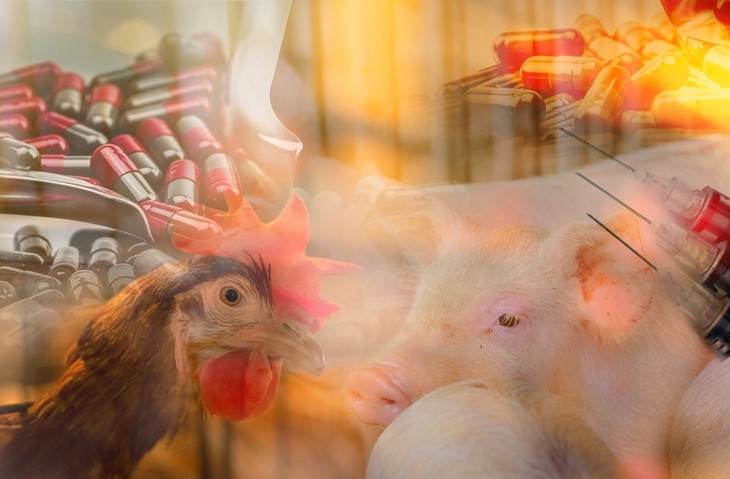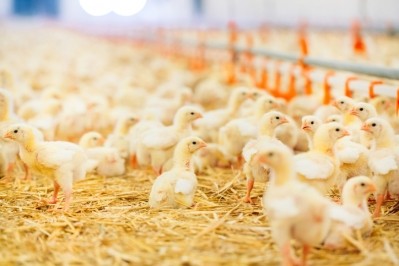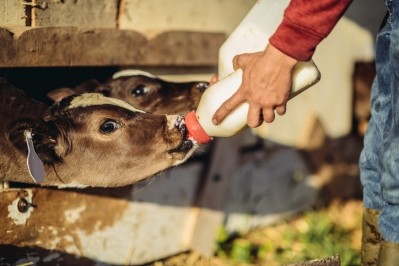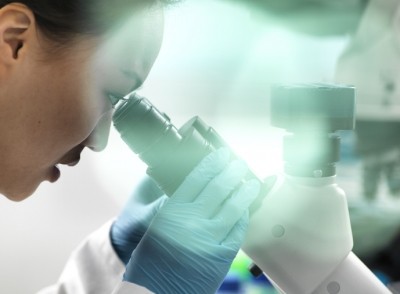Trouw Nutrition wants to make responsible use of antibiotics ‘easy and manageable’

The company said the program, Small Switches. Big Change, is a science-based approach to responsibly reducing antibiotic use in livestock production while improving animal health, performance and profitability. It said the initiative is backed by its extensive investments in R&D along with its over 10 years of collaboration with commercial swine and poultry farms.
Producers want practical guidance and trusted expertise to help them make the change in a way that protects their animals and their business, according to Dr Barbara Brutsaert, sustainability manager, antibiotic reduction, Trouw Nutrition.
The program focuses efforts on the most critical feed, farm, and health concerns, allowing producers to determine the extent and pace of antibiotic reduction. Consisting of five steps – profile, assessment, advice, assist and evaluate – it is designed to facilitate a cycle of reduced antibiotic use. The company said each step is considered, implemented, and evaluated hand in hand with the producer considering their specific situation.
Ending the sale of critically important antibiotics and AGPs
Trouw Nutrition is focusing the campaign on the main markets in which it sells antibiotics – Brazil, Mexico, Iberia, Canada, and South Africa, said Dr Brutsaert. “We want to stop our own sales of antibiotics - those classified as critically important for human health by the WHO, also referred to as Critically Important Antibiotics (CIA), as well as antibiotic growth promoters (AGPs). That is part of our objectives under our Sustainability Roadmap 2025.”
The company sells AGPs in Brazil and in South Africa - they are used mainly in poultry and ruminants, and to a lesser extent in swine in those two markets, she told us. “We also want to stop using CIAs – these are mainly used in swine but also in poultry, rabbits, and ruminants."
In 2021, Nutreco mapped, measured, and developed systems to monitor the use of antibiotics in the products it sells. It also established a baseline so it could start tracking its progress in even greater detail, from 2022 onward. Some 558 tons of antibiotics - active ingredients - were processed at Nutreco businesses in the year 2021. Of this total volume of antibiotics used, 18.6% (104 tons) were classified as CIA. “Our businesses report that 12% (66 tons) of the total volume of antibiotics were used as AGPs and the remaining volume as curative or prophylactic treatment. The fact that, out of the 66 tons used as AGP, 21 tons were classified as CIA, is especially worrying and underlines the urgent need to improve the responsible use of antibiotics in the animal husbandry value chain,” it noted.
Tailoring the program to customer needs
According to Dr Brutsaert, Trouw Nutrition’s work on antibiotic reduction at the customer level first got underway about 10 years ago. The team saw that often producers just starting out on this journey want to do too much too quickly, or they can panic about where to begin. That is why the company advises them to take small steps initially, she said.
“The steps and the switches we advise will be different per country and even per customer, and we make use of our global pool of experts,” she continued.
The initiative is not about adding a product and seeing if that can reduce antibiotic use, it is much more holistic in its approach, explained Dr Brutsaert. “We really look at the entire production chain, from raw material input to rearing, all the way to the slaughterhouse, and see where it would be most efficient to act.”
Feed structure
Examining the form and quality of feeds can inform recommendations to support animals in critical life stages like early life and can help maintain animal performance under different health challenges, she said. Evaluating each farm's practices and objectives helps achieve nutritional supports tailored to the farm, such as young animal feed specialities, synergistic feed additives and health diet formulation services.
“When a producer is looking to us to help with antibiotic reduction, we always start on the farm, and we evaluate feed quality, the proportion of fines and the feed structure, for example, Specifically, in poultry, poor gizzard development indicates more structural components need to be added to the feed.”
If the birds’ stomachs are functioning well, there will be better grinding, a lower pH and better digestion later on in the intestines, said the Trouw Nutrition representative. And studies show well-developed stomachs, as well as the addition of organic acids, can act as barriers in preventing pathogenic bacteria from entering the distal intestinal tract.
“If we see problems with feed form and structure, we will carry out further analysis in our labs, which are based in different regions of the world, and we will check for microbiological quality as well. If we determine that the pellet quality, the hardness, is not optimal, then we will visit the feed mill, and see how we can improve it, doing so as efficiently as possible in terms of energy and production costs. If we can improve the pellet quality, then we ensure all the birds on the farm get access to the same quality of feed.”
Some 70-80% of antibiotics in poultry are focused on gut health related issues, said Dr Brutsaert. “Most of the immunity cells are situated in the gut, so even if there is a respiratory or systemic problem in poultry, or in swine, by improving the gut health, you also improve the immunity function.”
The swine industry is much less integrated than the poultry sector in many markets globally, with the result being that poultry players in many countries, particularly the US, have made huge strides when it comes to antibiotic reduction. “It is much easier to act when you have control over the entire value chain,” said the expert.
In terms of best practice when it comes to lowering dependence on antibiotics in production, Dr Brutsaert said that is often linked to what the customer wants, and what the regulatory or market demands are in each country. But ultimately it comes down to an integrated holistic approach in the entire value chain, covering feed, farm and health management. “Next to optimizing nutrition, farm management including biosecurity training is crucial, while also understanding what the antibiotics are really being used for. When antibiotics are used for secondary infections, it’s important to understand the primary cause of the health challenge.”
Protein quality
And antibiotics are often used as a safety blanket on farms, masking bad management practices on farm or suboptimal nutrition, she said. Not focusing on optimal protein quality would be one example of bad practice.
While reducing the levels of protein in feed formulations is important, evaluating the quality of the protein incorporated into diets is also critical, continued Dr Brutsaert, next to adding targeted feed additives to improve the digestibility and improve the intestinal health. The higher the digestibility of the protein and intestinal development, the greater the benefits for overall production. “The use of highly digestible protein is good for the environment, for the farm’s economics as protein inputs cost a lot of money, and it is also better for gut health.”
Spanish farms show the way
Farms and integrators implementing Trouw Nutrition's holistic approach have reduced antibiotics while improving key production parameters, she said.
A broiler integrator in Spain achieved a 95% decrease in antibiotics in six years along with a 36% lower mortality. In 2021, depending on the brand, between 87% and 100% of its broiler production was produced without antibiotics. Similarly, a swine feed mill in Spain saw a decrease in year-over-year antibiotic use and, by 2021, it had reduced antibiotics by 86% compared to 2016. The farm continues to reduce antibiotics without sacrificing performance. Through the first three months of 2022, the swine mill saw a 56% reduction in antibiotics (kg API).








